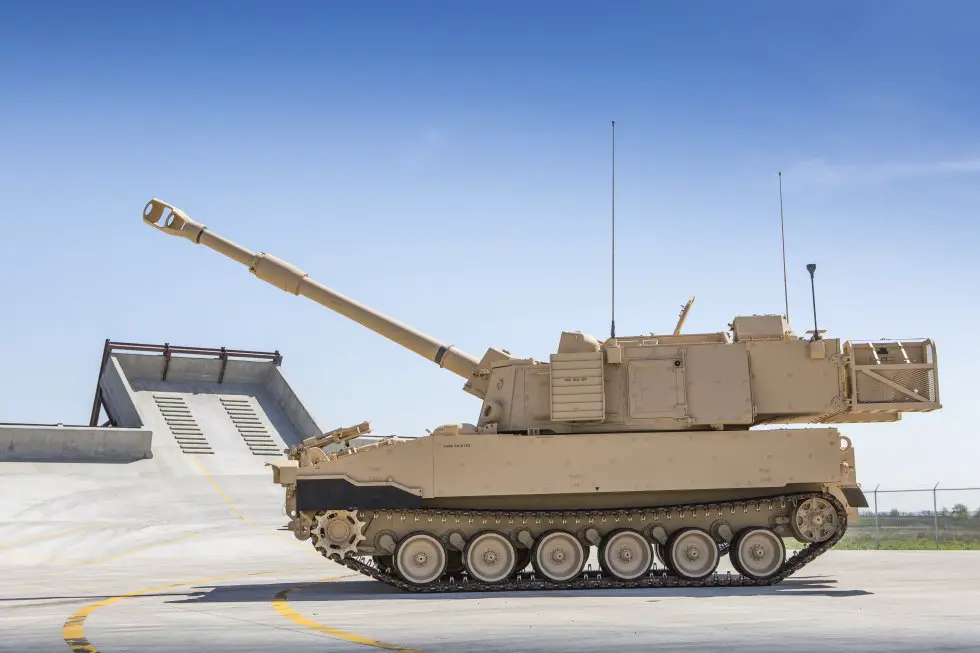Extending the U.S. Army's field artillery range and expanding the capability of long-range precision fires is crucial to maintaining overmatch against potential adversaries, U.S. Army leaders have said. As such, the ability to deliver accurate, long-range attacks is now a top priority for the service.

M109A7 self-propelled howitzer (Picture source: BAE Systems)
"As we look at the entire surface-to-surface fires portfolio, we're looking at extending the range of our cannons to fight the close fight," said Brig.Gen. Stephen Maranian, director of the newly-created Long-Range Precision Fires Cross-Functional Team. "We're looking at the future capabilities for our rockets and missiles to enable them to get up to a much greater range, and use sensors to home in on signals and be more accurate." The general said that the Army must also have the ability to hit moving targets both at sea and on land.
Long-range precision fires is one of the Army's six modernization priorities that are supported by one of eight Cross-Functional Teams, or CFTs. Those teams will eventually be a part of the Army Futures Command, expected to stand up this summer.
Maranian, who also serves as the commandant of the Army's Field Artillery School at Fort Sill, Oklahoma, said the service must quickly adapt to keep pace with the modernization efforts of potential adversaries. It must transition from fighting insurgencies to being ready to conduct large-scale ground combat.
As part of the long-range precision fires modernization effort, the Army is looking to expand the range of the M109A7 self-propelled howitzer beyond its current range of 24 kilometers with standard rounds and 30 kilometers with rocket-assisted projectiles.
This week, the 1st Battalion, 5th Artillery is expected to complete testing for the new M109A7 at Fort Riley, Kansas. Soldiers have been driving the vehicle more than 60 miles per day, while firing more than 100 projectiles daily.
"They're really giving the system an opportunity to drive and to shoot and to put it through its paces -- to really test the system," Maranian said. "This is the final gateway before the Army goes to a full-rate production decision."
Two weeks ago the Army conducted testing of a new rocket-assisted projectile at Arizona's Yuma Proving Ground. "It's going to be essential to our ability to reach out to the 70-kilometer range," Maranian said.
Over the past five months, Maranian has led a small Cross-Functional Team that includes about 15 core members from Aberdeen Proving Ground, the Army's G8, the Office of the Assistant Secretary of the Army for Acquisition, Logistics and Technology, TRADOC, Army Test and Evaluation Command and Army Forces Command. Maranian said his team has done its financial analysis and has aligned funding with technologies that will be incorporated into future weapons.
The general stressed that a collective effort by the eight Cross-Functional Teams established in October by Army Chief of Staff Gen. Mark Milley will help expedite the modernization process. He said directly involving Soldiers and civilians in the acquisition process is the key to moving quickly. Having a CFT member from the testing community can also help reduce the testing process significantly.
"As we go forward, we've got to make sure that we are doing things in a way that does not rely on old legacy ways of doing business," Maranian said. "We've got to find ways to reform our process; to ensure that it doesn't take 10-12 years to deliver capability to Soldiers' hands.
"We've got to get much more agile than that to be able to make sure that we're staying ahead of technology and ensuring that we maintain an overmatch over our potential adversaries' capabilities. The speed at which technology moves now versus 30 years ago is much greater and we can't afford to use legacy timelines to be the model for how we modernize in the future."
The Long-Range Precision Fires CFT and the other seven CFTs, each include contracting experts, science and technology experts, budget experts and operators. Maranian's team has also partnered with Marine Corps Field Artillery. "We have common platforms now," Maranian said. "We want to make sure we're working together again to be efficient."
When the U.S. engaged in conflicts in Iraq and Afghanistan following 9/11, the emphasis shifted away from modernization to fight insurgent battles. The general said that while the ability to fight insurgencies must be maintained, the focus on readiness of the force and modernization should be paramount.
"I think during the time we were focused on counter-insurgency, we were not optimizing the modernization of our force," Maranian said. "We were utilizing our resources to maintain readiness and we were not spending as much on the modernization efforts. During that time, I would say that potential adversaries did indeed focus more on modernization while we were focused elsewhere.
"The Army must modernize its field artillery forces to be able to deliver lethal, long-range precision fires in order to be able to compete, deter and win on the modern battlefield," he said.














